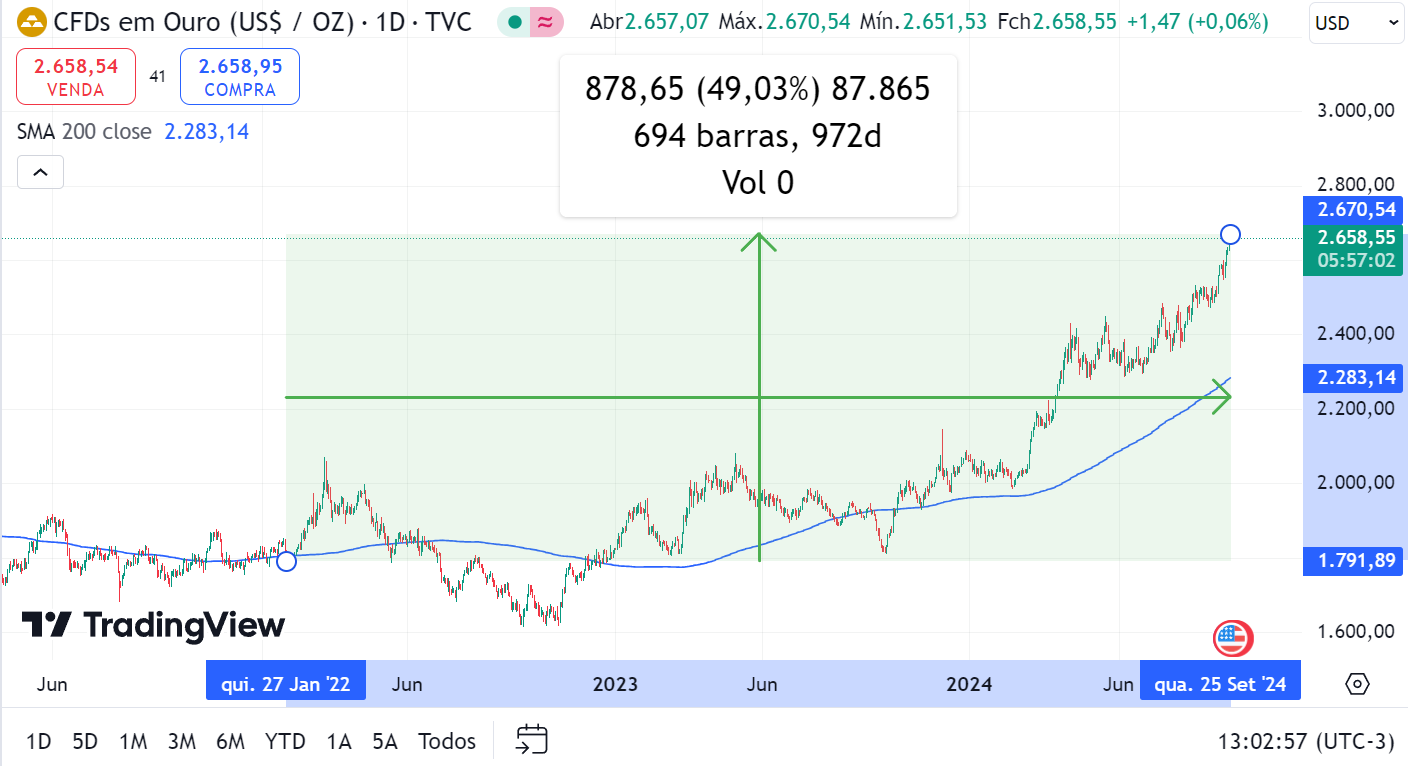Tracking the Most Crucial Geopolitical Asset: What the Rising Gold Price Tells Us
‘‘The flow of gold into China has gone from a steady stream to an absolute torrent.’’ - Ross Norman
Gold has continued its impressive rally, reaching its fifth consecutive all-time high today, surging to an extraordinary $2,700 per troy ounce.
Since October 2023, gold's performance has been remarkable, delivering a year-to-date return of 33%. This places it as the second-best performing asset class, trailing only Bitcoin during this period.
Recent analysis points to heightened interest in risk assets and the U.S. rate cut as key factors behind this price surge. Indeed, gold has a historically inverse correlation with interest rates, with lower rates typically supporting higher gold prices. However, it's crucial to consider the broader factors influencing gold’s price rise.
Since the onset of the Ukraine-Russia conflict, gold prices have surged by 50%.
In November 2022, China launched an aggressive gold-buying campaign.
In 2023, the People's Bank of China (PBoC) ramped up its efforts, increasing its gold reserves by 30%.
According to the World Gold Council (WGC), central banks, led by China, collectively purchased 1,037 metric tons of gold in 2023, with the PBoC alone acquiring more gold than all other central banks combined.
Despite being the world’s largest gold producer, China continues to import substantial quantities of gold. Between 2022 and 2023, China imported 2,800 metric tons of gold, an amount surpassing the metal held by global exchange-traded funds (ETFs) and equivalent to one-third of the gold reserves of the U.S. Federal Reserve.
Fonte: https://www.ceicdata.com/en/indicator/china/gold-reserves
China's growing gold reserves coincide with its reduction in U.S. bond holdings.
Although China is still the second-largest holder of U.S. government bonds, its holdings have been significantly shrinking. In early 2022, China held over $1 trillion in U.S. Treasuries, but by July 2024, this figure had dropped to a recent low of $776 billion.
The PBoC’s gold acquisitions are part of its broader strategy to reduce reliance on U.S. dollar assets amid deteriorating relations between the two economic superpowers, escalating trade wars, and increasing economic sanctions. By decreasing its dependence on the U.S. dollar, China aims to become less vulnerable to U.S. sanctions.
As a result, China has been aggressively selling off its U.S. Treasury holdings. In addition to the central bank’s gold purchases, Chinese gold ETFs have also seen positive net accumulation. According to the WGC, Chinese gold ETFs experienced their strongest first half on record, with demand comfortably surpassing that of any other country during the January to June period.
BRICS+
China may be one of the most prominent examples, but many countries are increasing their gold reserves. China's accelerated efforts toward de-dollarization are also driven by its commitments to BRICS+ (Brazil, Russia, India, China, South Africa, Iran, Egypt, Ethiopia, Saudi Arabia, and the UAE). The bloc has made it clear that it seeks to use local currencies in bilateral trade.
Notably, the 11 BRICS+ member countries already account for 15% of the world’s gold reserves, 30% of its land, 40% of the global population, and 54% of global GDP.
Will the rise continue?
The recent surge in gold prices and the slowdown in purchases over the past two months have raised questions about the continuation of aggressive buying by the PBoC, with some analysts suggesting that the buying spree may have come to an end.
While Beijing's gold purchases may not be immune to rising prices, it seems likely that if geopolitical risks persist, buying will continue in the long term.
Interestingly, despite its aggressive purchasing, China's gold holdings represent a relatively small percentage compared to other major economies. While Russia holds 29% of its reserves in gold, China has only 4.9%. This gold share is the lowest among any major economy.
Fonte: https://www.gold.org/goldhub/data/gold-reserves-by-country
Conclusion
Gold's performance so far in 2024 has been impressive. However, given the economic uncertainties, it does not seem to have reached a peak. I particularly see room for additional growth in demand for gold, especially when considering China's limited investment options, the weakening yuan, and the declining dollar in the context of anticipated interest rate cuts.
As geopolitical tensions between China and the United States are unlikely to dissipate anytime soon, gold appears to have continued potential for growth.
To know more:
https://www.globaltimes.cn/page/202404/1310143.shtml
https://internationalbanker.com/banking/whats-behind-chinas-gold-buying-spree/







Geoeconomia é um dos assuntos mais interessantes do momento! Mais um ótimo texto.